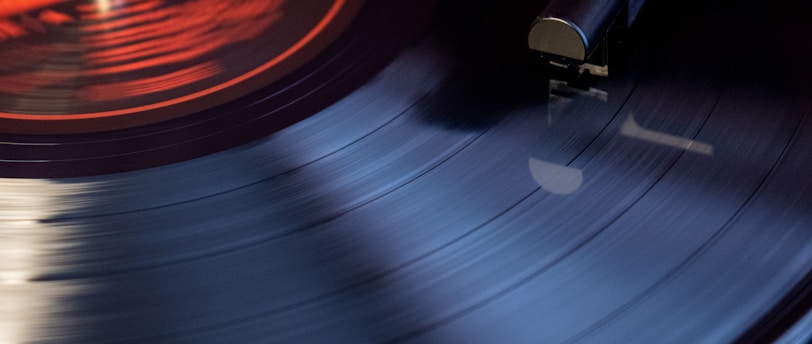Best Soundscapes for Sleep: Transform Your Nights
Discover the best soundscapes for sleep and how they can improve your rest. Learn about different types of sleep sounds, backed by research, to enhance your nightly routine.
MUSIC
Vesper Lee
6/24/20243 min read


Did you know that nearly 70 million Americans suffer from sleep disorders? The struggle for a good night's sleep is real, and it affects millions worldwide. If you're one of them, you might be searching for solutions beyond medication or counting sheep. One powerful yet often overlooked remedy is soundscapes. Incorporating the best soundscapes for sleep can transform your nights from restless to restful. But what makes a soundscape effective for sleep? And how can you find the perfect one for you? Stay with us to explore the soothing world of sleep soundscapes and discover how they can help you achieve better sleep.
The Science Behind Soundscapes and Sleep
Soundscapes are carefully crafted combinations of sounds designed to promote relaxation and improve sleep quality. The idea is rooted in the concept of auditory masking, where certain sounds can drown out disruptive noises, creating a calming environment conducive to sleep. According to the National Sleep Foundation, consistent and soothing sound can help you fall asleep faster and stay asleep longer.
Types of Soundscapes for Sleep
1. White Noise
White noise is a consistent sound that covers a wide range of frequencies. It effectively masks other sounds, making it a popular choice for many.
Pros: Effective at blocking out sudden noises, promotes deep sleep.
Cons: Can be monotonous and might not be soothing for everyone.
Examples: Fan noise, static from a radio.
2. Pink Noise
Pink noise is similar to white noise but with a lower, more even frequency. Studies have shown it may improve sleep quality by enhancing brain wave stability.
Pros: More natural sounding than white noise, promotes deep sleep.
Cons: Some find it less effective at masking sharp noises.
Examples: Rainfall, rustling leaves.
3. Nature Sounds
Nature sounds like ocean waves, rain, and forest ambience are highly popular for sleep. They provide a soothing, immersive experience.
Pros: Reduces stress, creates a relaxing environment.
Cons: May not mask loud noises effectively.
Examples: Ocean waves, rainforest, thunderstorms.
4. Ambient Music
Gentle, ambient music can also serve as a sleep aid. This type of soundscape often incorporates slow, repetitive melodies designed to relax the mind.
Pros: Can be very soothing, helps with relaxation.
Cons: Personal music preferences vary, might be distracting.
Examples: Instrumental tracks, soft piano music.
Research-Backed Benefits of Sleep Soundscapes
Several studies support the effectiveness of soundscapes in improving sleep. For instance, a study published in the Journal of Caring Sciences found that participants who listened to nature sounds experienced significant improvements in sleep quality. Another study from Frontiers in Human Neuroscience indicated that pink noise could enhance deep sleep and memory retention in older adults.
How to Choose the Best Soundscape for You
Identify Your Needs: Consider what disrupts your sleep. Is it external noise, stress, or a racing mind?
Experiment with Different Sounds: Try out different soundscapes to see what works best for you.
Use Quality Sound Equipment: Invest in good speakers or headphones to ensure the sound is clear and soothing.
Check for Consistency: Make sure the soundscape plays continuously without abrupt stops.
Creating Your Own Sleep Soundscape
Creating a personalized sleep soundscape can be a fun and rewarding process. Here are some steps to get you started:
Mix Different Sounds: Combine white noise with nature sounds or ambient music.
Adjust Volume Levels: Ensure the volume is consistent and not too loud.
Use Apps and Tools: Many apps allow you to customize and create your own soundscapes.
Test and Adjust: Listen to your creation at bedtime and make adjustments as needed.
Popular Soundscape Apps and Devices
Apps: Calm, Headspace, Relax Melodies
Devices: White noise machines, smart speakers like Amazon Echo or Google Home
Conclusion
Soundscapes offer a natural and effective way to enhance your sleep. By understanding the different types and experimenting with what works best for you, you can create a peaceful environment that promotes restful sleep. Remember, the key is consistency and finding what truly soothes your mind and body. Don’t hesitate to explore various options, and soon, you’ll find the perfect soundscape to transform your nights. Sweet dreams!
Dubai, United Arab Emirates
Disclaimer: Some of the posts on this website may contain affiliate links. This means that if you click on certain links and make a purchase, we may earn a commission at no additional cost to you.
Your support through clicking on these affiliate links helps us to maintain and improve this website for our readers. We genuinely appreciate your support.
